Can an excavator be modified with long legs and equipped with a large bucket?
Excavators can be modified with long legs and equipped with large buckets, creating specialized machines like unloading train excavator legs systems. These modifications transform standard excavators into highly efficient machines capable of accessing elevated work areas such as train cars for unloading materials. The elevated chassis raises the excavator's height significantly, typically providing clearance of around 4200mm, which is ideal for train car operations. When combined with large buckets (2-3.5 cubic meter capacity), these modified excavators can unload a train car in just 5-8 minutes. Such customizations are particularly valuable in railway maintenance, construction, and mining industries where standard equipment cannot effectively reach or handle materials at significant heights.
Technical Feasibility
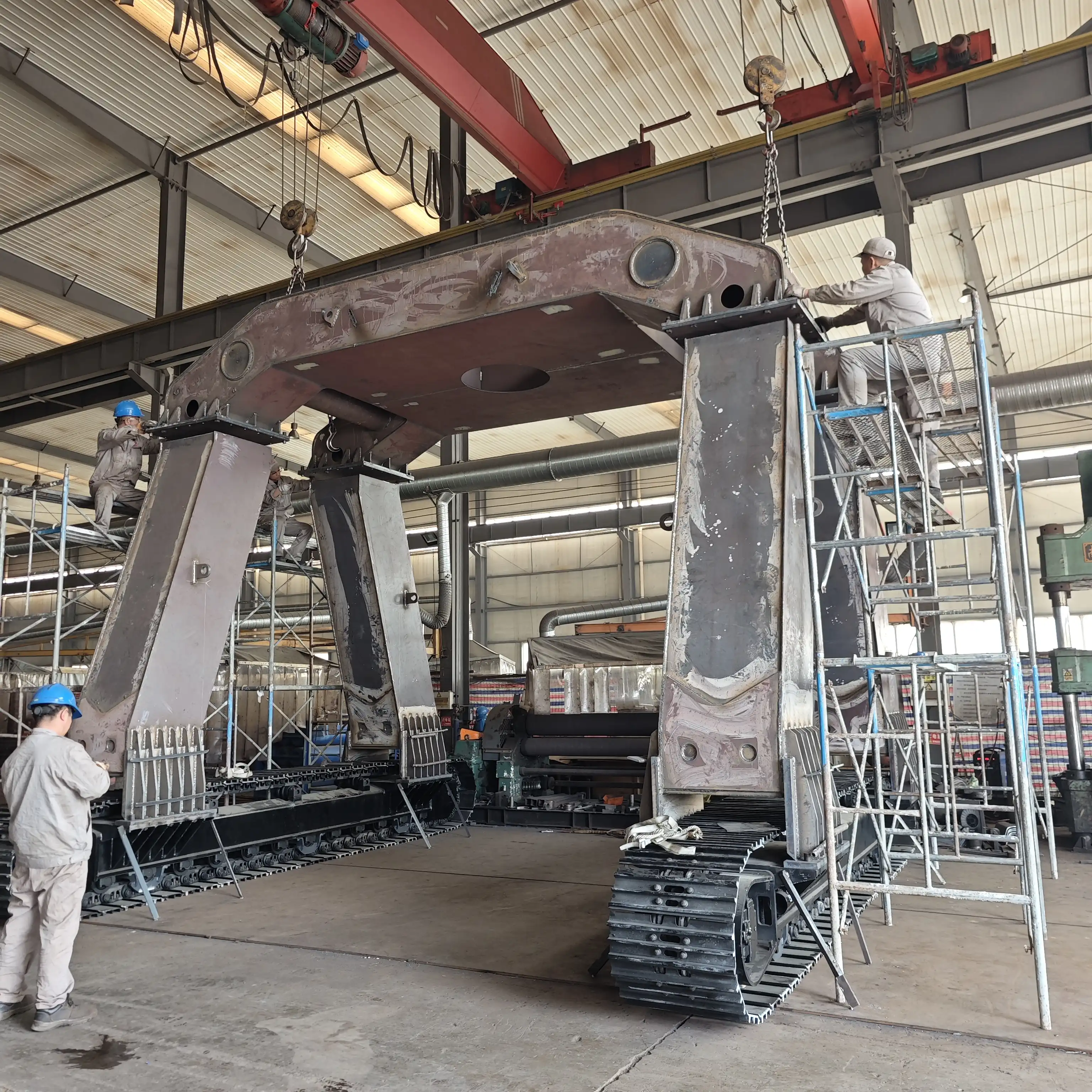
Excavator Modifications
Modifying excavators with long legs represents a significant engineering achievement in heavy machinery customization. The process involves carefully redesigning the excavator's undercarriage while maintaining its structural integrity and operational balance. These modifications are not simply aftermarket add-ons but precision-engineered transformations that extend the machine's capabilities without compromising its core functionality.
The technical feasibility of installing long legs on excavators depends primarily on three factors: the excavator's original weight distribution, hydraulic system capacity, and structural design. Engineers must calculate load-bearing requirements precisely to ensure the modified machine remains stable during operation. The long legs themselves are typically constructed from high-strength steel alloys that offer optimal strength-to-weight ratios, ensuring durability while minimizing unnecessary weight addition.
Modern manufacturing techniques, including computer-aided design and finite element analysis, have made these modifications increasingly reliable and safe. The integration of advanced materials science has also contributed significantly to the feasibility of these modifications, allowing for stronger yet lighter components that can withstand the additional stresses placed on the excavator's frame and hydraulic systems.
Large Bucket Integration Challenges
Equipping a long-legged excavator with a large bucket presents unique engineering challenges that require careful consideration. The primary concern is maintaining proper counterbalance when the bucket is fully loaded. As bucket capacity increases from standard 1-2 cubic meter designs to larger 2-3.5 cubic meter versions, the weight distribution changes dramatically, particularly at full extension.
Hydraulic systems must be recalibrated or upgraded to handle the increased load requirements. This often involves installing larger cylinders, reinforced hydraulic lines, and sometimes more powerful pumps. The articulation points where the bucket connects to the arm must be strengthened to withstand greater stress during loading and unloading operations.
The bucket design itself must be optimized for the specific materials being handled. For train unloading operations, buckets are often designed with specialized features such as reinforced cutting edges, wear-resistant linings, and optimized geometry for efficient material flow. These design elements ensure that the larger bucket doesn't just hold more material but also discharges it efficiently and resists wear from abrasive materials like coal, ore, or aggregate.
Safety Considerations in Height Modifications
Safety is paramount when modifying excavators with long legs, as the elevated work position introduces new operational risks. The higher center of gravity fundamentally changes the machine's stability profile, requiring additional engineering controls to prevent tipping during operation. Unloading train excavator legs systems typically incorporate wider track bases or outriggers that distribute the machine's weight more effectively.
Operator visibility becomes a critical concern at elevated heights. Modern modifications address this through several approaches: panoramic cabins that provide 360-degree visibility, additional cameras that eliminate blind spots, and digital display systems that give operators real-time information about the machine's position relative to its environment. Some advanced systems even incorporate proximity sensors that alert operators to potential obstacles or hazards.
Fall protection systems are another essential component of these modifications. Protective barriers around the operator cabin, non-slip surfaces on all walkways, and secure access ladders with proper handrails are standard features. Additionally, many modern long-legged excavators include emergency lowering systems that can quickly bring the machine to ground level in case of mechanical failure or other emergencies.
Performance Improvement

Enhanced Operational Reach
The installation of long legs on excavators dramatically transforms their operational capabilities by significantly expanding their vertical reach. Standard excavators typically operate with a ground clearance of 0.5-1 meter, severely limiting their ability to access elevated work areas. With unloading train excavator legs modifications, machines can achieve clearance heights of 4300mm or more, completely transforming their application potential.
This enhanced reach capability creates new operational possibilities across multiple industries. In railway maintenance, these machines can easily access the tops of train cars for unloading bulk materials like coal, ore, or aggregate. The ability to position directly above the car rather than reaching from the side dramatically improves unloading efficiency and reduces material spillage. The panoramic view afforded to operators from this elevated position enables precise bucket placement and material handling.
Beyond railway applications, the increased vertical reach proves valuable in numerous scenarios: clearing vegetation above flood control channels, accessing elevated demolition work, and performing maintenance on tall structures. The extended height also provides safety benefits by allowing operators to maintain greater distance from potentially hazardous materials or unstable structures while still effectively completing required tasks.
Efficiency Gains in Material Handling
The combination of long legs and large buckets creates remarkable efficiency improvements in material handling operations. Traditional excavators working on train unloading might require multiple repositioning movements to access all areas of a train car, with limited bucket capacity requiring numerous cycles to complete unloading. Modified excavators eliminate these inefficiencies through their elevated position and increased capacity.
A standard excavator might require 15-20 minutes to unload a typical train car, with significant material spillage during the process. By contrast, a properly modified excavator with a 2-3.5 cubic meter bucket can complete the same task in just 5-8 minutes with minimal spillage. This efficiency gain comes from both the larger bucket capacity and the optimal positioning above the material, allowing for cleaner scooping motions.
The efficiency improvements extend beyond just speed. Material compaction is reduced because the bucket can enter materials from above rather than from the side, preserving material quality. This is particularly important when handling aggregate or other materials where excessive handling can cause degradation. Additionally, the precise placement capabilities reduce cleanup requirements after unloading operations, further enhancing overall operational efficiency.
Cost-Benefit Analysis of Modifications
Investing in excavator modifications requires careful financial consideration, but the cost-benefit analysis often strongly favors these specialized adaptations for companies with regular high-reach requirements. The initial modification costs typically range from 20-40% of the base excavator price, representing a significant investment. However, when compared to purpose-built specialized equipment, modified excavators present a substantially more economical solution.
The return on investment timeline varies by application but generally falls within 12-24 months for operations with regular usage requirements. This calculation considers several factors: increased operational efficiency (40-60% time savings in material handling), reduced labor costs, decreased material spillage and loss, and lower maintenance requirements compared to pushing standard equipment beyond its designed capabilities.
Maintenance considerations actually favor modified excavators in many cases. While the modifications add complexity to some systems, they often reduce stress on others by allowing the machine to perform tasks within comfortable operational parameters rather than at the extreme edges of its design envelope. Additionally, most modifications utilize standardized components compatible with regular service schedules, avoiding specialized maintenance requirements that might increase ongoing costs.
Proven By Practice
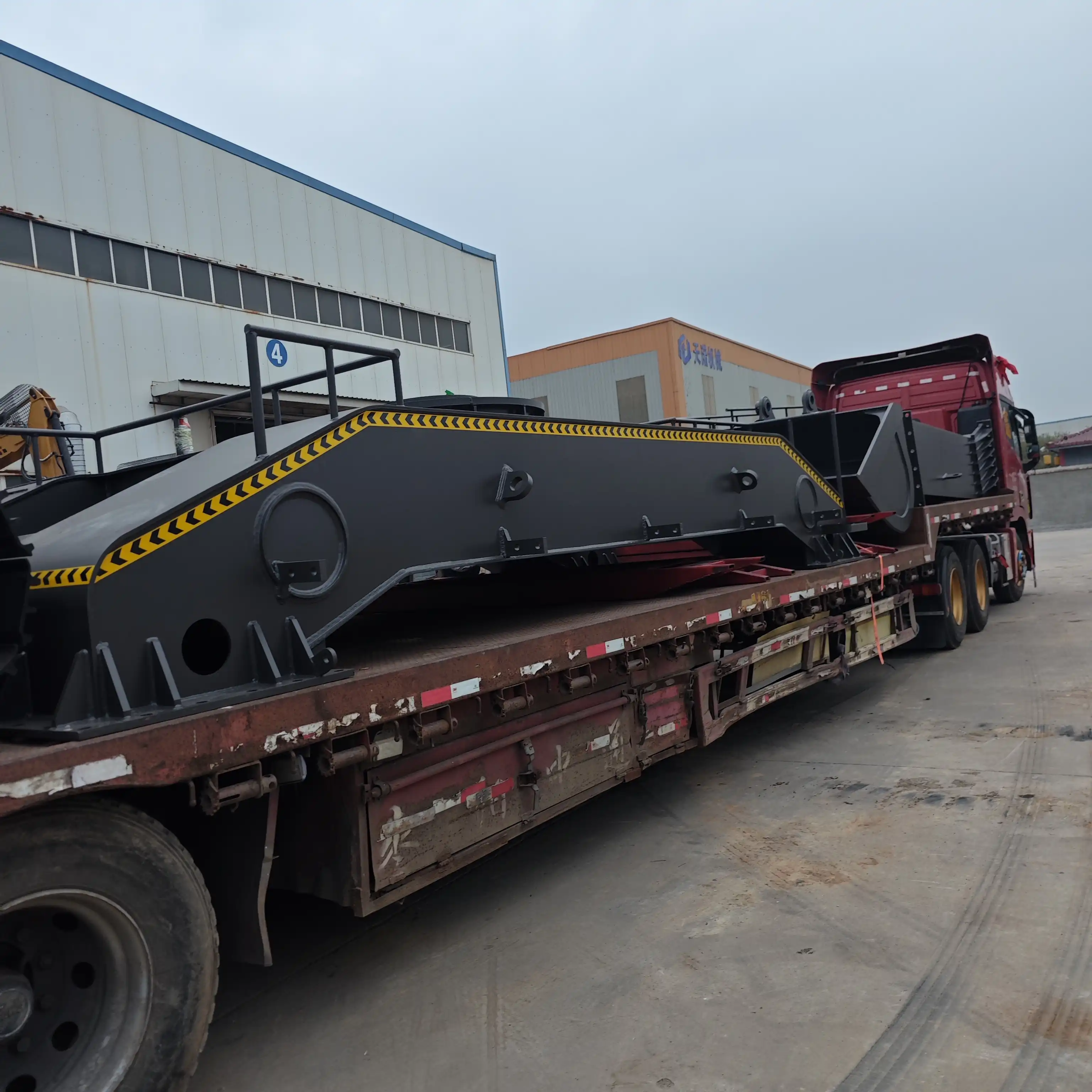
Case Studies in Railway Applications
The practical effectiveness of long legged excavators with large buckets has been conclusively demonstrated across numerous railway operations worldwide. One particularly illustrative example comes from a major coal transport operation in northern China, where a fleet of six modified excavators replaced twelve standard machines previously used for train unloading operations. The modified excavators consistently unloaded 120-car trains in under 12 hours – a task that previously required 20+ hours with conventional equipment.
Similar success stories have emerged from mining operations in Australia, where specialized unloading train excavator legs systems have revolutionized mineral transport logistics. At one iron ore facility, the implementation of four modified excavators increased daily unloading capacity by 62% while reducing labor requirements by nearly 40%. The elevated positioning of these machines allowed operators to work continuously without the frequent repositioning previously required.
European infrastructure projects have likewise benefited from these specialized machines. During railway reconstruction projects in Germany, modified excavators with both long legs and specialized buckets performed multiple functions that would traditionally require separate machines: unloading ballast material, precisely placing it along tracks, and handling oversized components. This versatility significantly reduced equipment requirements and simplified logistics for complex railway maintenance operations.
Operator Feedback and Experience
Operators with experience using modified excavators consistently report significant improvements in both productivity and comfort. The elevated position provides substantially improved visibility compared to standard machines, reducing operator fatigue during extended operations. The panoramic view eliminates many of the blind spots that challenge operators of conventional excavators, improving both safety and operational precision.
Control systems in modern modified excavators are designed to compensate for the altered dynamics of the elevated machine. Operators report that after brief adaptation periods (typically 2-3 days), the modified machines actually feel more intuitive to operate than standard excavators for elevated work. The stability enhancements and counterbalancing systems provide confidence when working at height, allowing operators to focus on optimal bucket placement and material handling rather than constantly monitoring machine stability.
Ergonomic improvements are another frequently cited benefit. The cabin design of most modified excavators includes enhanced climate control systems, reduced vibration transmission, and optimized control layouts. These features become particularly important during extended operations, with operators reporting less fatigue after 8-hour shifts compared to standard machines. The combination of improved visibility, enhanced controls, and better ergonomics translates directly into higher productivity and fewer operator errors.
Long-Term Durability Assessment
Critical to the value proposition of modified excavators is their long-term durability and reliability. Field data from machines with 5+ years of service reveals that properly engineered modifications maintain excellent longevity profiles when subjected to appropriate maintenance protocols. The specialized steel used in leg extensions – typically high-strength, low-alloy varieties – shows minimal fatigue or stress concentration issues even after years of cyclic loading.
Hydraulic systems in well-designed modifications demonstrate reliability comparable to or better than standard configurations. This counterintuitive outcome results from the more predictable loading patterns experienced by machines operating within their designed parameters versus standard machines frequently pushed to their operational limits. Component life analysis shows that critical wear items like pins, bushings, and hydraulic seals in modified machines often achieve service intervals 15-25% longer than their standard counterparts when used for similar tasks.
The economic lifecycle of modified excavators typically extends 7-10 years before major refurbishment becomes necessary – comparable to standard machines but with significantly higher productivity during that period. Most impressively, the structural modifications maintain their integrity throughout this service life, with inspections revealing minimal stress cracking or deformation in properly engineered extension systems. This longevity translates directly into improved return on investment and lower lifetime operating costs.
FAQ
①What is the maximum height possible for excavator leg extensions?
While customizations vary, most commercial leg extensions provide clearance of 4200-4500mm. Custom extensions can reach greater heights for specialized applications, but stability considerations become increasingly complex beyond 5000mm.
②Does modifying an excavator with long legs void the manufacturer's warranty?
This depends on the manufacturer and the modification process. Professional modifications performed by certified engineering firms like Tiannuo often maintain limited warranty coverage. Always consult with both the manufacturer and the modification specialist before proceeding.
③How does the modification affect the excavator's mobility and transport?
Long legged excavators typically require special considerations for transport between work sites. Most designs incorporate folding or removable leg sections to facilitate transportation. On-site mobility remains similar to standard excavators, though turning radius may be slightly increased.
④Can any excavator model be modified with long legs?
Most excavators between 13-40 tons can be successfully modified, though the specific design varies based on the original machine's configuration. The best candidates have robust undercarriages and hydraulic systems with some excess capacity.
Excavator modifications with long legs and large buckets represent a specialized but highly effective solution for industries requiring elevated material handling capabilities. These customized machines deliver exceptional performance improvements that justify their additional cost for appropriate applications. For more information about custom excavator modifications including unloading train excavator legs systems, please contact our engineering team at boom@stnd-machinery.com.
References
Journal of Heavy Equipment Engineering, "Structural Modifications for Excavator Height Enhancement: A Technical Review," Volume 28, Issue 4, 2023.
International Railway Equipment Digest, "Modern Approaches to Bulk Material Handling in Rail Transport," 2024 Annual Industry Review.
Construction Machinery Technology Quarterly, "Hydraulic System Adaptations for Modified Excavator Applications," Fall 2023 Issue.
Mining Operations Technology Review, "Case Studies in Material Handling Equipment Modifications," Volume 15, 2024.
Railway Maintenance Equipment Standards Association, "Safety Guidelines for Elevated Equipment Operations in Railway Environments," 3rd Edition, 2023.
About Author: Arm
Arm is a leading expert in the field of specialized construction and railway maintenance equipment, working at Tiannuo Company.
YOU MAY LIKE
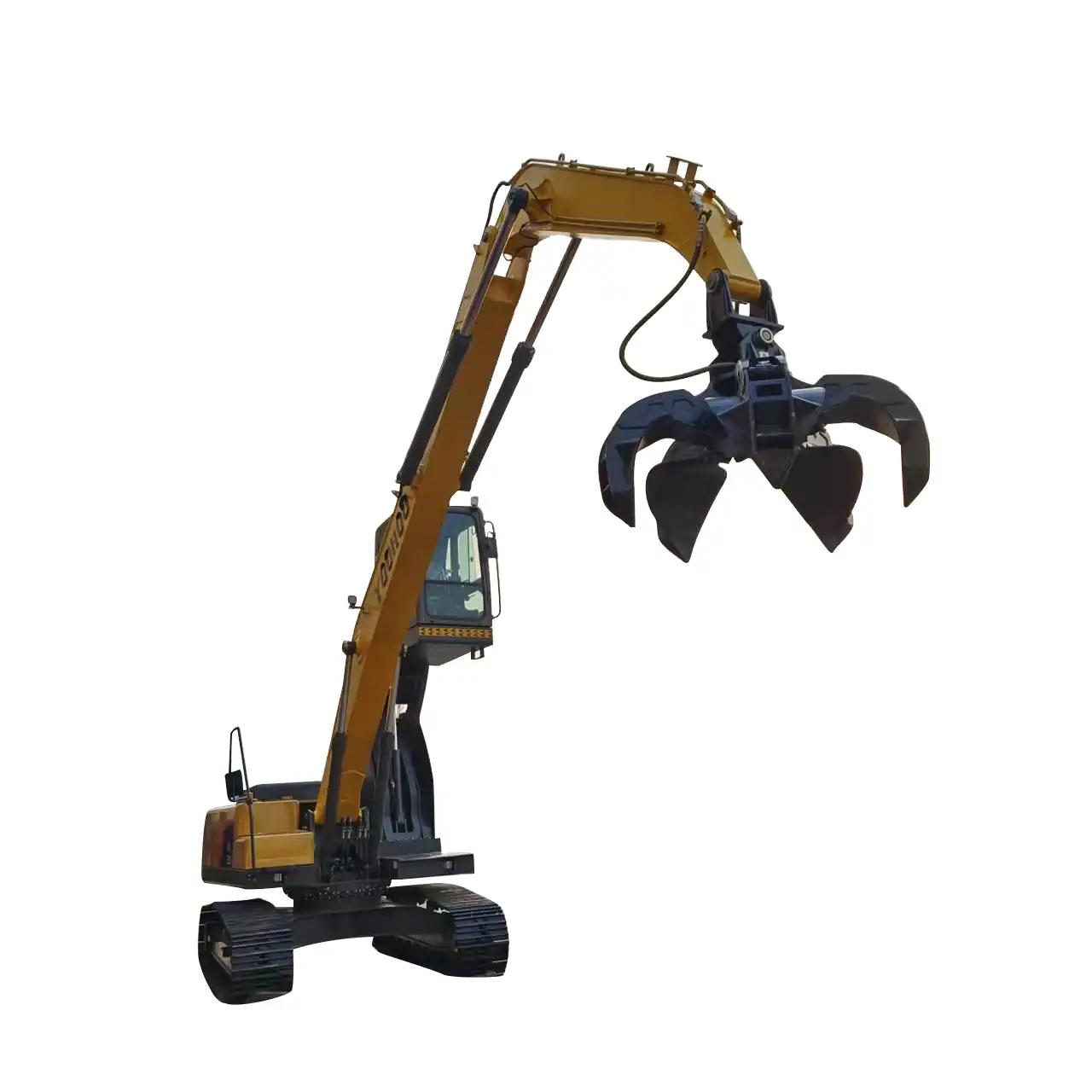 VIEW MOREUnloading Arm Steel Grabbing Machine
VIEW MOREUnloading Arm Steel Grabbing Machine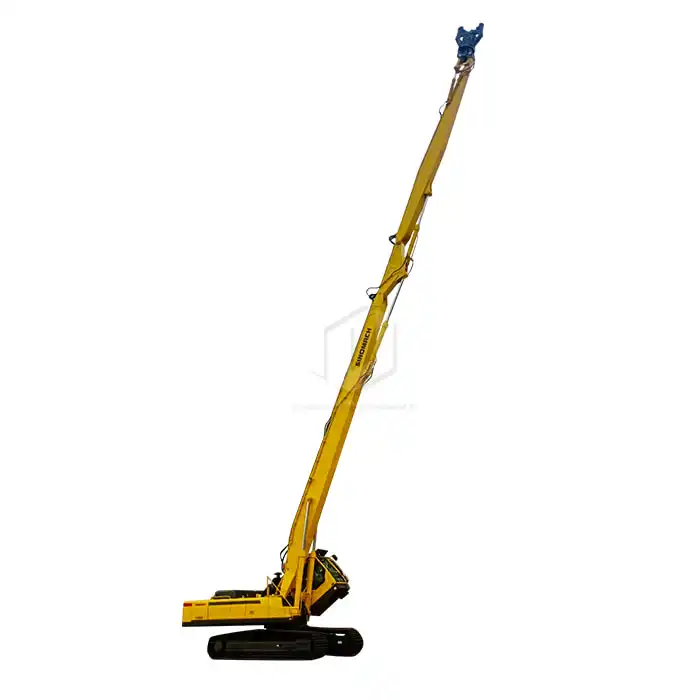 VIEW MOREExcavator High Reach Demolition Arm
VIEW MOREExcavator High Reach Demolition Arm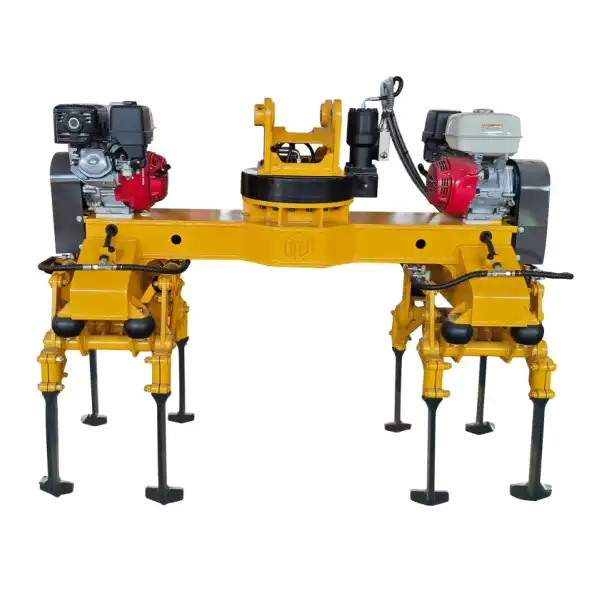 VIEW MOREBallast Tamper(Gasoline Type)
VIEW MOREBallast Tamper(Gasoline Type)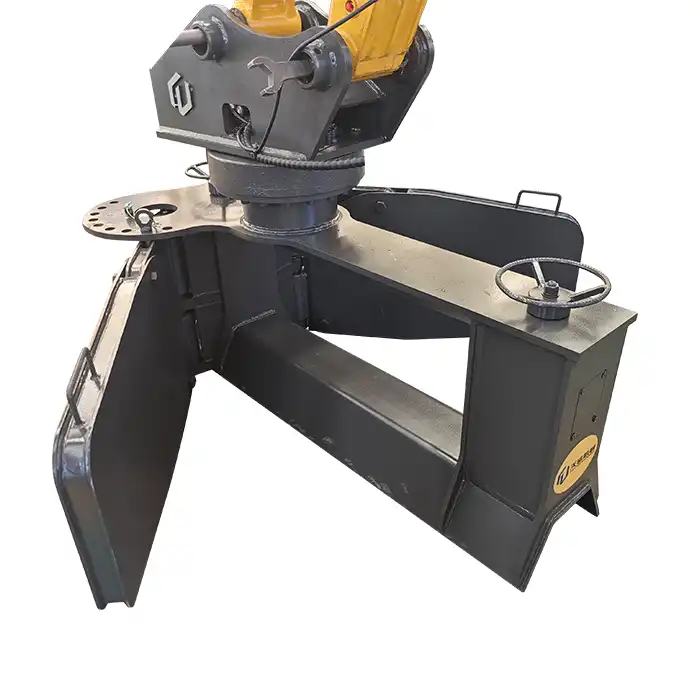 VIEW MORERailway Excavator Ballast Plow
VIEW MORERailway Excavator Ballast Plow_1766548255549.jpg) VIEW MOREPremium Rail Excavator Double Head Tamping Machine
VIEW MOREPremium Rail Excavator Double Head Tamping Machine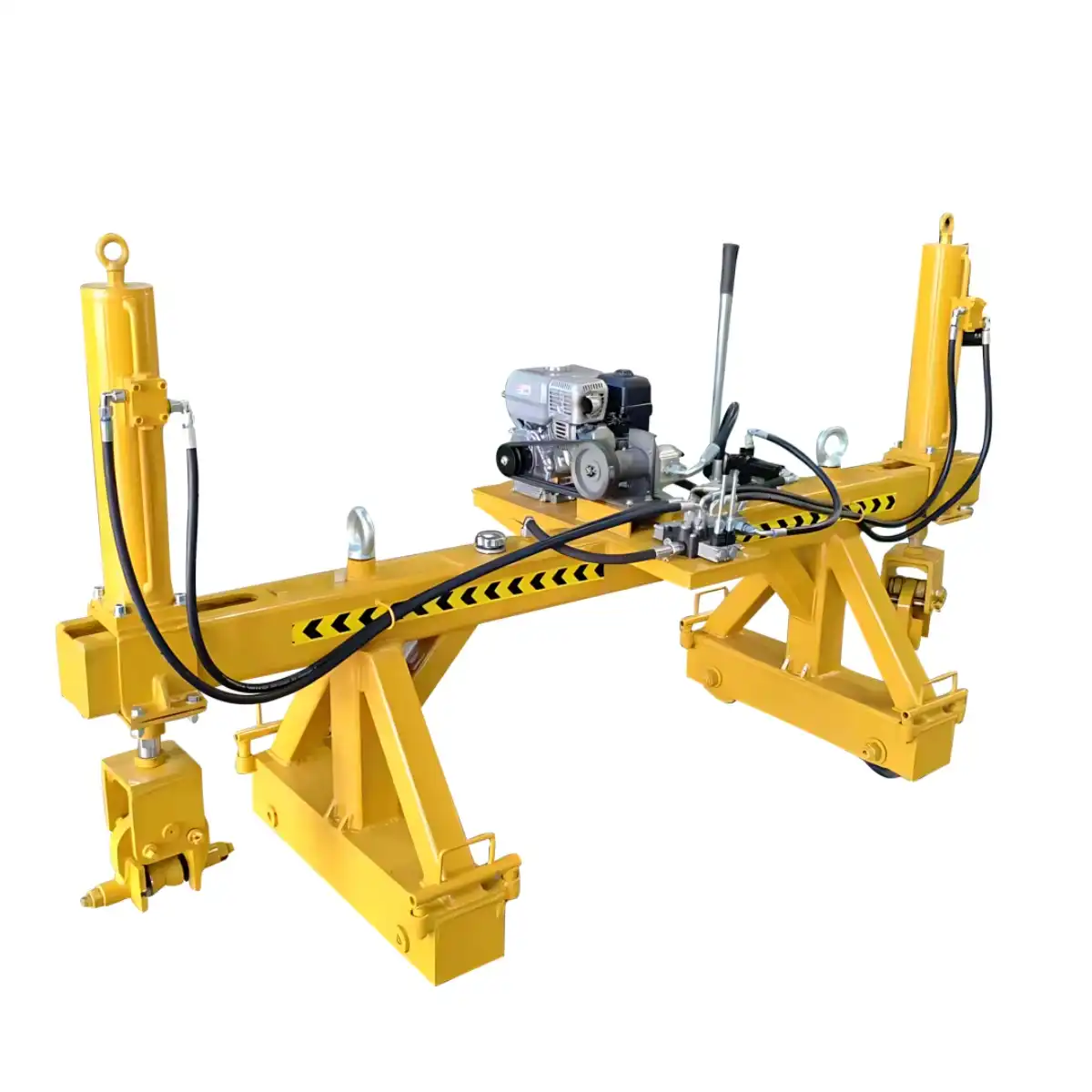 VIEW MORELong rails transfer carrier
VIEW MORELong rails transfer carrier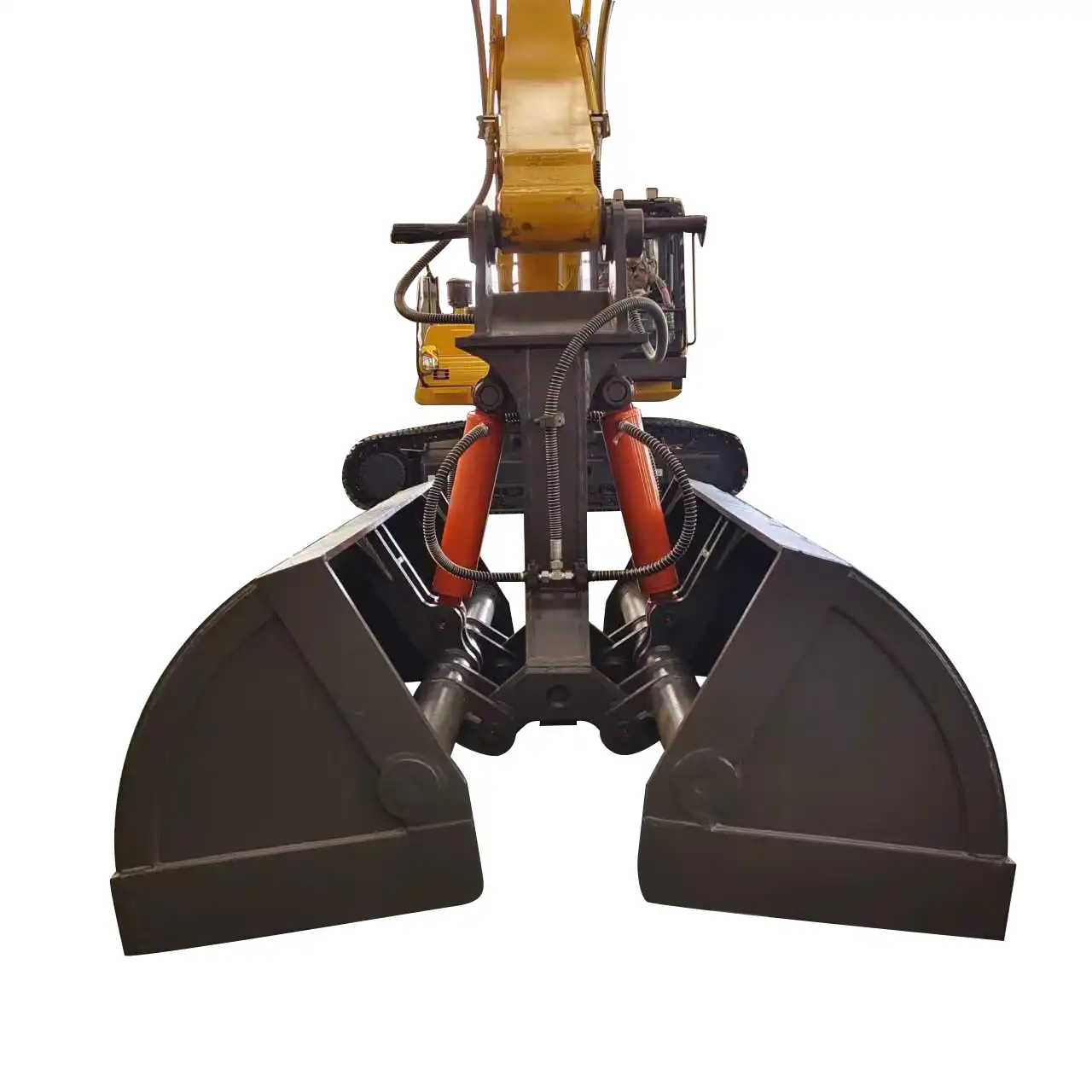 VIEW MOREClamshell Buckets for Excavators for sale
VIEW MOREClamshell Buckets for Excavators for sale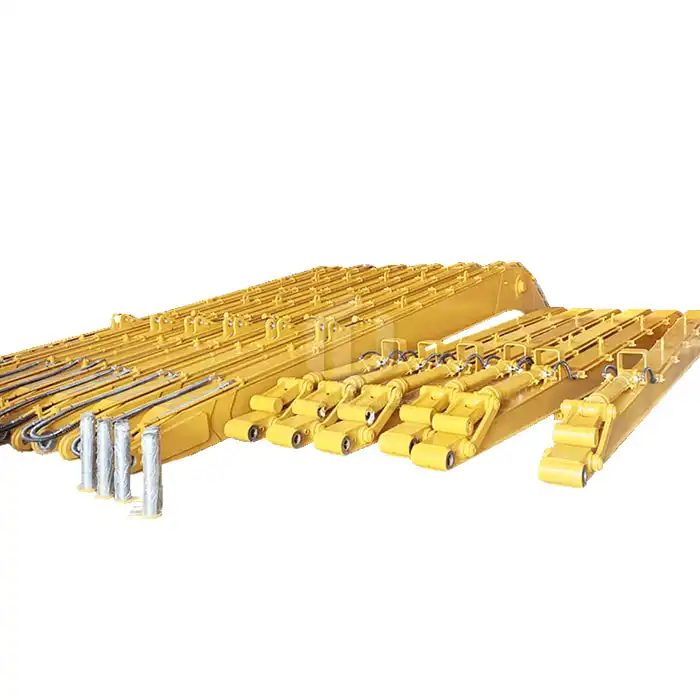 VIEW MOREExcavator Extension Arm
VIEW MOREExcavator Extension Arm

